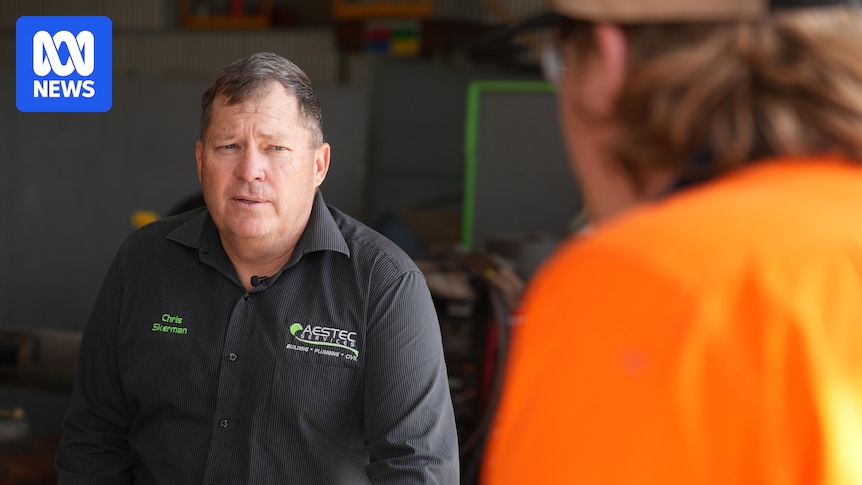
A few years ago, the promise of green hydrogen was the talk of Gladstone, a town traditionally built on coal. The vision was clear: transform into a green energy hub with zero-emissions fuel powering its industries. Chris Skerman, a local business owner, recalls the excitement surrounding the potential projects. “Very, very big projects were being discussed — billions and billions of dollars worth of construction in the area,” he said. However, the reality has been less promising.
Some projects did materialize, such as Fortescue’s $150 million green hydrogen facility, which opened on the outskirts of the city in April 2024. Yet, just over a year later, the facility sits silent. Fortescue has scaled back its ambitions, and other companies have withdrawn from hydrogen initiatives altogether. “I don’t think too many people know what the future is for hydrogen at the moment,” Skerman expressed, reflecting the uncertainty now overshadowing Gladstone.
The Challenges Facing Green Hydrogen
The past year has been particularly challenging for advocates of Australian green hydrogen. A major setback was the cancellation of a $14 billion project in Gladstone, initially backed by the Queensland government-owned Stanwell Corporation. Similarly, Origin Energy withdrew from a significant project in the Hunter region, citing financial impracticality. Despite these setbacks, Orica, a partner in the Hunter project, is continuing with a scaled-back version, supported by over $430 million in federal funding.
Fortescue also confirmed the abandonment of its Gladstone hydrogen project in July, alongside another in Arizona. The company, once a major proponent of the technology, remains committed to using hydrogen for green iron production at its Christmas Creek mine. Dino Otranto, Fortescue’s chief executive of metals and operations, stated, “Any new energy will involve taking some risk on a number of different technologies. Some will pay off, and some won’t.”
Economic Hurdles
The concept of Australia as a ‘renewable superpower’ hinges on its ability to harness solar and wind energy to produce green hydrogen. This hydrogen could then be used to manufacture green products for global export. However, the economics of green hydrogen remain challenging. Saul Kavonic, an energy analyst with MST Financial, noted, “Ultimately, what it comes down to is green hydrogen is very expensive to produce.” He explained that the cost of producing green hydrogen is currently 300 to 700 percent higher than natural gas.
“In order for green hydrogen to ever get competitive, we need to see significant cost reductions, not just in electrolyser equipment, but actually in the source of energy as well.” — Saul Kavonic
Government Support and Future Prospects
Despite these challenges, the Australian government remains committed to the potential of green hydrogen. Energy Minister Chris Bowen likened the technology’s current state to the early days of solar and battery technology, which have since become more affordable. “Yes, it’s taking longer than I would like to become commercial. It’s taking longer than some people predicted,” Bowen acknowledged, but he emphasized the ongoing work and potential of green hydrogen.
Germany has also shown interest in Australia’s hydrogen industry, investing taxpayer funds and collaborating on a global hydrogen auction aimed at securing international buyers. Beate Grzeski, Germany’s ambassador to Australia, reiterated the importance of green hydrogen for Germany’s decarbonization goals. “Despite the withdrawal of projects, we still see a significant number of projects in the pipeline and the potential of Australia’s resources,” she stated.
Scaling Back Ambitions
Experts suggest that a more measured approach may be necessary for the green hydrogen industry to succeed. Alison Reeve, energy program director at the Grattan Institute, emphasized the need for smaller, intermediate projects. “A couple of years ago, a lot of the projects that were floating around were absolutely gigantic,” she said. “We’re now in a phase where people are going, ‘actually, let’s just take the intermediate step’.”
“When you are dealing with an industry that is at a very early stage of its development, you should be worried if projects are not failing. That is actually kind of a necessary stage to go through for new industries.” — Alison Reeve
Local Impact and Future Steps
For regions like Gladstone, the promise of green hydrogen investment remains crucial. Matt Burnett, the mayor of Gladstone, suggested that a phased approach incorporating ‘blue hydrogen’ could have been beneficial. “Some of these projects were probably scaling up too big, too fast,” he said. Chris Skerman echoed the sentiment, highlighting the economic importance of such projects for the area. “This is the industry town — we build those sorts of things all the time and run these plants quite regularly,” he noted.
While the path forward for green hydrogen is fraught with challenges, the potential benefits continue to drive interest and investment. As the industry navigates these hurdles, the hope remains that green hydrogen can eventually play a significant role in global decarbonization efforts.





